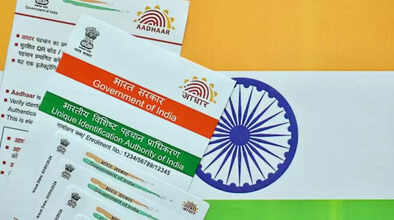"Aadhaar Card New Rules from November 1: UIDAI Brings 3 Major Changes — Here’s What You Need to Know"

If you use your Aadhaar Card for everyday services like opening a bank account, applying for government subsidies, or verifying your identity for mobile SIMs, there’s an important update you can’t ignore. The Unique Identification Authority of India (UIDAI) has announced three major changes that will take effect from November 1, 2025.
These new rules will directly impact millions of citizens, as they change how Aadhaar-related updates, linkages, and verifications will work going forward. Here’s a complete breakdown of what’s changing — and how it will affect you.
1. Online Aadhaar Updates Get Easier — But Now Come with a Fee
Starting November 1, updating your Aadhaar details such as name, address, date of birth, or mobile number will become easier and faster. You will no longer need to visit a physical Aadhaar Seva Kendra for basic demographic updates — they can now be done online from home.
However, UIDAI has also introduced a revised fee structure for these services. Users will have to pay a small charge for every online update, making the process more organized and digitally verified.
Under the new system, Aadhaar data will also be cross-linked with other government databases — such as PAN, passport, ration card, and birth certificates — to simplify verification and reduce paperwork.
What This Means for You:
-
No more long queues at Aadhaar centers for minor updates.
-
All you need is a mobile number and email linked to your Aadhaar.
-
Quicker verification through interlinked government databases.
-
Reduced manual documentation and travel expenses.
2. PAN–Aadhaar Linking Deadline Extended — But Mandatory
UIDAI has also emphasized the importance of linking PAN with Aadhaar. According to the latest rule, every PAN cardholder must link their Aadhaar by December 31, 2025.
Failing to do so will result in your PAN becoming inactive from January 1, 2026. This will directly affect your ability to conduct financial transactions, file income tax returns, or invest in mutual funds.
Moreover, for individuals applying for a new PAN card, Aadhaar authentication has now been made compulsory.
Why This Matters:
-
Prevents duplication and misuse of PAN cards.
-
Helps the government curb financial frauds and tax evasion.
-
Ensures smoother financial operations and accurate identity verification.
Warning:
If you fail to link your Aadhaar and PAN by the deadline, you might face transaction freezes across your bank accounts, mutual fund investments, Demat accounts, and tax-saving instruments.
3. New Fee Structure for Aadhaar Updates
UIDAI has also revised its service charges effective October 1, 2025. The new rates are as follows:
| Type of Update | Revised Fee (₹) |
|---|---|
| Demographic Update (Name, Address, DOB, Mobile, Email) | 75 |
| Biometric Update (Fingerprint, Iris, Photograph) | 125 |
| Children (Ages 5–7 and 15–17 years) | Free |
| Home Enrollment Service | ₹700 (First person), ₹350 (Each additional person) |
These new fees reflect UIDAI’s effort to improve service delivery while maintaining security and data accuracy.
4. What You Should Do Now
Before the new rules come into force, it’s important to ensure that your Aadhaar and PAN details are accurate and up to date. Follow these steps to stay compliant and avoid service disruptions:
✅ Log in to the official UIDAI website and verify your Aadhaar details.
✅ Complete the PAN–Aadhaar linking before December 31, 2025.
✅ Familiarize yourself with the new update fees and procedures.
✅ Update your bank and financial institutions with your latest Aadhaar-linked details.
By following these steps, you’ll remain secure, active, and hassle-free even after the new UIDAI rules come into effect.
Why This Matters
These changes reflect UIDAI’s ongoing effort to make Aadhaar more efficient, transparent, and digitally integrated. With simpler online access, stronger verification systems, and tighter compliance requirements, Aadhaar continues to be at the core of India’s digital identity ecosystem.
So, if you rely on Aadhaar for financial, government, or personal services, make sure you act before November 1, 2025, to stay compliant and avoid last-minute troubles.

